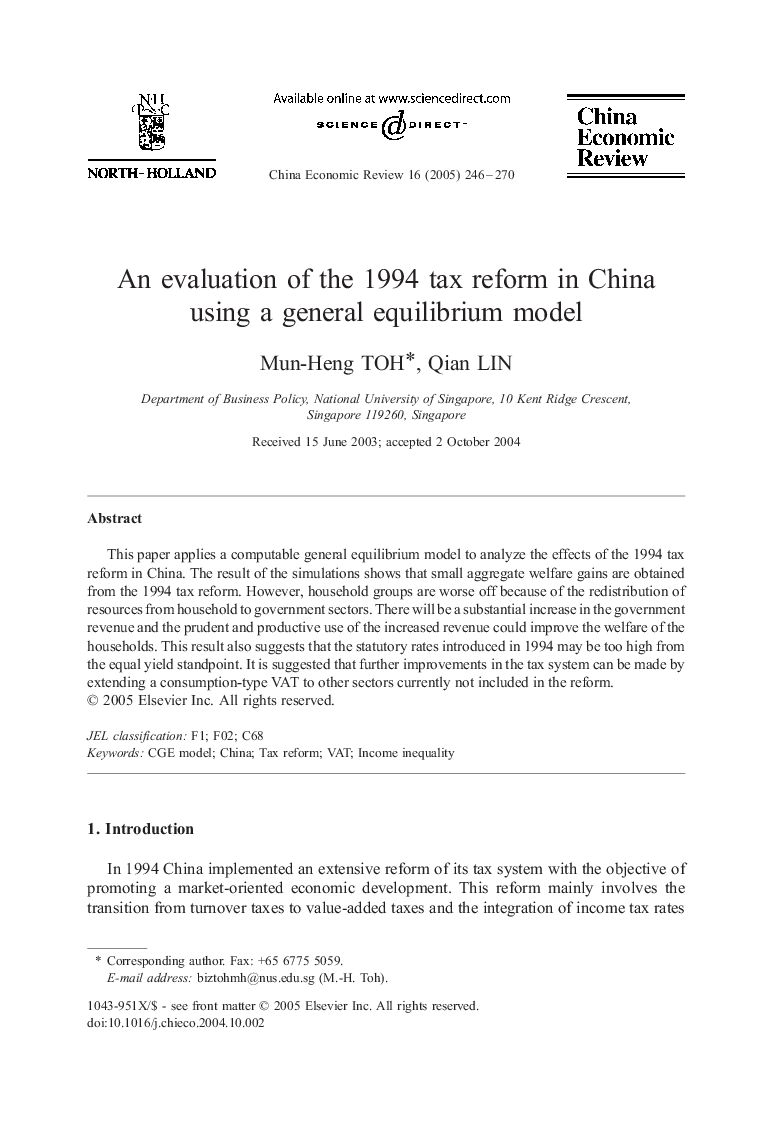| Article ID | Journal | Published Year | Pages | File Type |
|---|---|---|---|---|
| 9547466 | China Economic Review | 2005 | 25 Pages |
Abstract
This paper applies a computable general equilibrium model to analyze the effects of the 1994 tax reform in China. The result of the simulations shows that small aggregate welfare gains are obtained from the 1994 tax reform. However, household groups are worse off because of the redistribution of resources from household to government sectors. There will be a substantial increase in the government revenue and the prudent and productive use of the increased revenue could improve the welfare of the households. This result also suggests that the statutory rates introduced in 1994 may be too high from the equal yield standpoint. It is suggested that further improvements in the tax system can be made by extending a consumption-type VAT to other sectors currently not included in the reform.
Related Topics
Social Sciences and Humanities
Economics, Econometrics and Finance
Economics and Econometrics
Authors
Mun-Heng TOH, Qian LIN,
